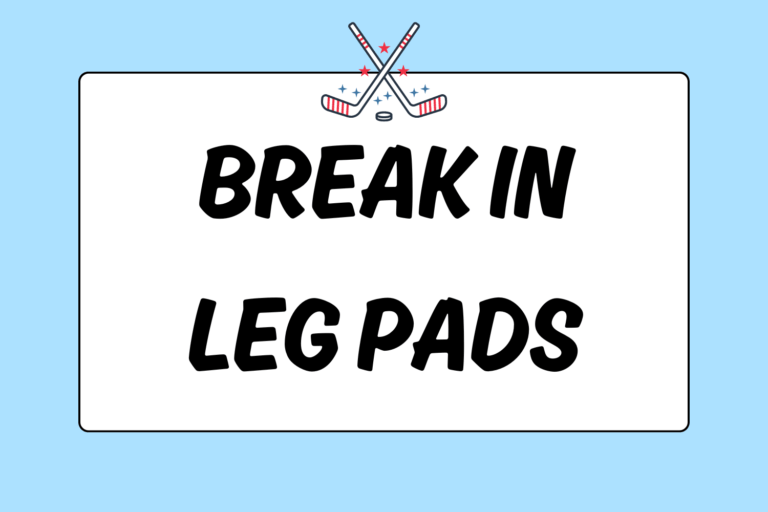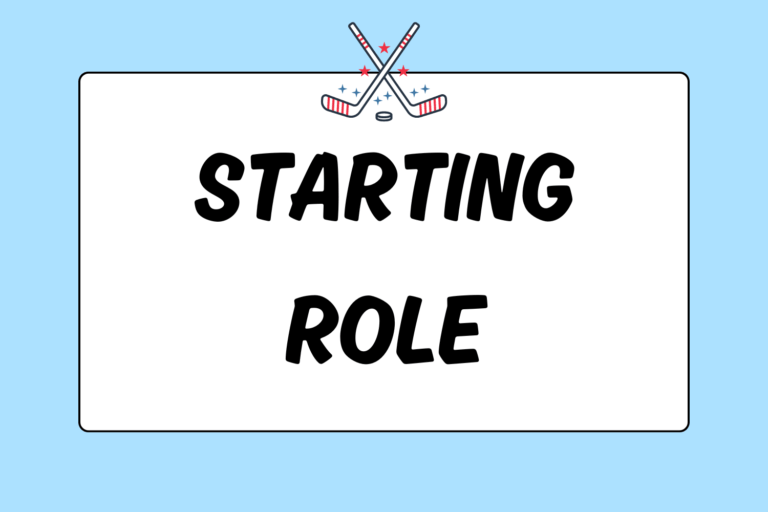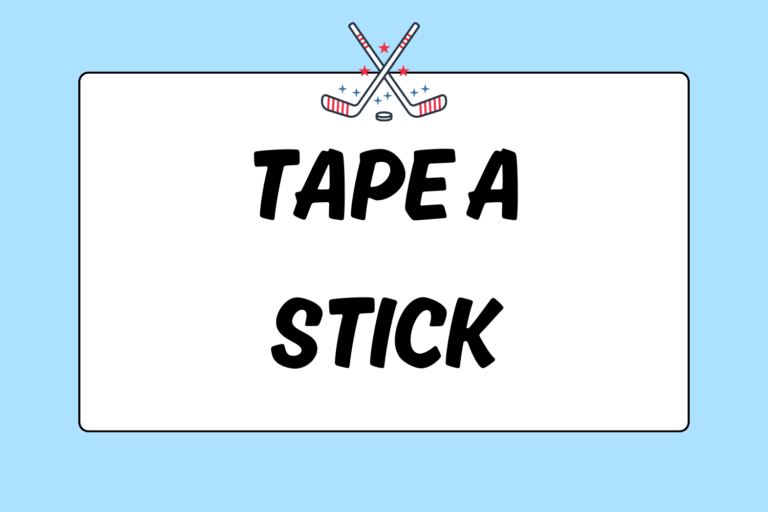T-pushes are one of the most used tools in a goalie’s skating toolbox. T-pushes allow a goalie to cover lots of ice quickly while maintaining a squared-up ready stance. The T-push is the most effective way to go from the top of the crease to a post (or vice versa), while also maintaining an upright skating stance (i.e. not drop into the butterfly position).
Starting the T-Push
The T-push gets its name the position of your skates as you initiate the move. Here’s how to start a T-push:
- Start in the basic ready stance.
- Open your leg on the side of your body that you intend to travel toward. For example, if you’re about to skate from the left post to the top of the crease, open your right leg.
- At this point, your skates should be perpendicular to each other, with your leading skate pointing in the direction you are about to travel.
- Make sure your knees are bent (which they should be when you’re in the ready stance). Push off with your trailing leg.
- Use your leading skate to guide your path.
- Drag the inside edge of your trailing skate behind you as your glide.
At this point, you’ve initiated the T-push… but the move is hardly complete.
T-Push Gliding
How you shift your weight to your front skate determines how quickly you’ll travel. The less weight on your trailing leg, the faster you’ll go. Some goalies choose to completely lift their trailing leg off of the ice, but this leads to choppy, jerky movements. You should avoid this mistake.
Mental Edge
When you first practice T-pushes, you’ll likely watch your skates go through the motions. Once you’ve got the basics, you should train yourself to make T-pushes without looking down. This skill frees your eyes so you can track the puck during game situations.
Stopping
As you approach the position on the ice that you wish to stop at, you have two options. Which one you choose is based largely on in-game situations, but also your own skating ability:
Glide-stop:
If the puck isn’t in a dangerous position, you can continue to drag the inside edge of your trailing leg along the ice to slowly bring yourself to a stop. This is the most common way for beginning goalies to stop after T-pushes. It’s easier, but slows you down over a greater distance… and thus slows your T-push.
C-cut:
If the opposing team has the puck and you need to stop quickly in the correct position, you should use the C-cut. To perform a C-cut, quickly slide the front of your skates inward so your inner-edge catches quickly. After a T-push, you can often stop yourself with C-cuts from one — or both — of your skates. For more advanced skaters, C-cuts will become the common way to stop after a T-push.
Turning
When you’re about to make a T-push in a game situation, turn your torso in the direction you plan on traveling. Starting a T-push with a torso turn forces your legs and skates to follow, and it ensure that you take the shortest route to your destination.
For example, if you’re hugging the left post and you’re about to make a T-push to the top of the crease, the first thing you should do is turn your torso towards the top of the crease. Then start your push.
Reassume the Ready Stance
One of the biggest benefits to the T-push is that it doesn’t drastically affect your stance (the way a regular skating stride would). However, anytime you make any sort of movement, your stance will be affected. Once you reach your destination, be sure that you’ve tightened your stance and closed off any holes in your coverage.
The T-push is another valuable tool to add to your repertoires. Practice the move often so you can use it in game situations and foil the shooter when he thinks he’s got you beat!





